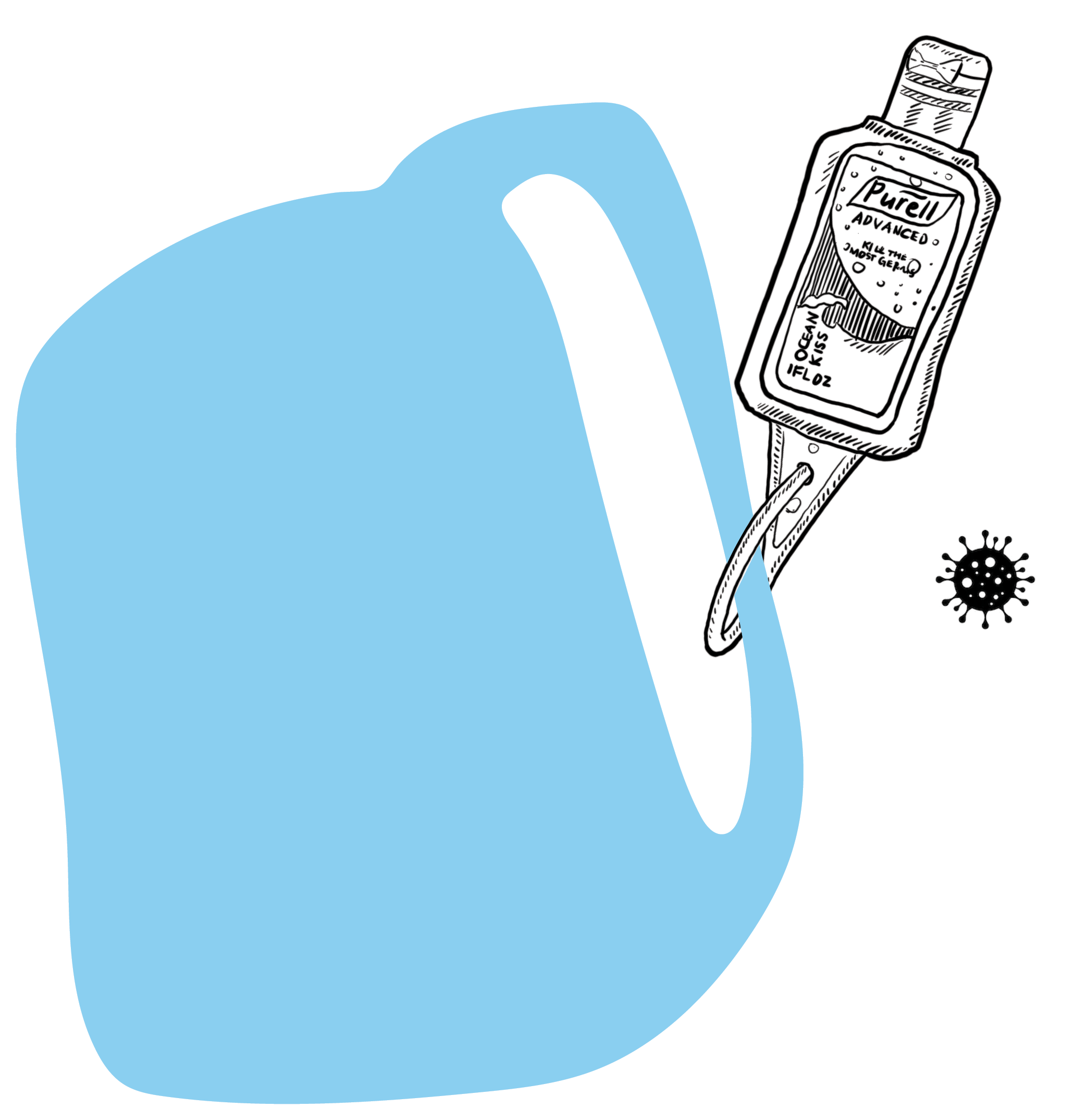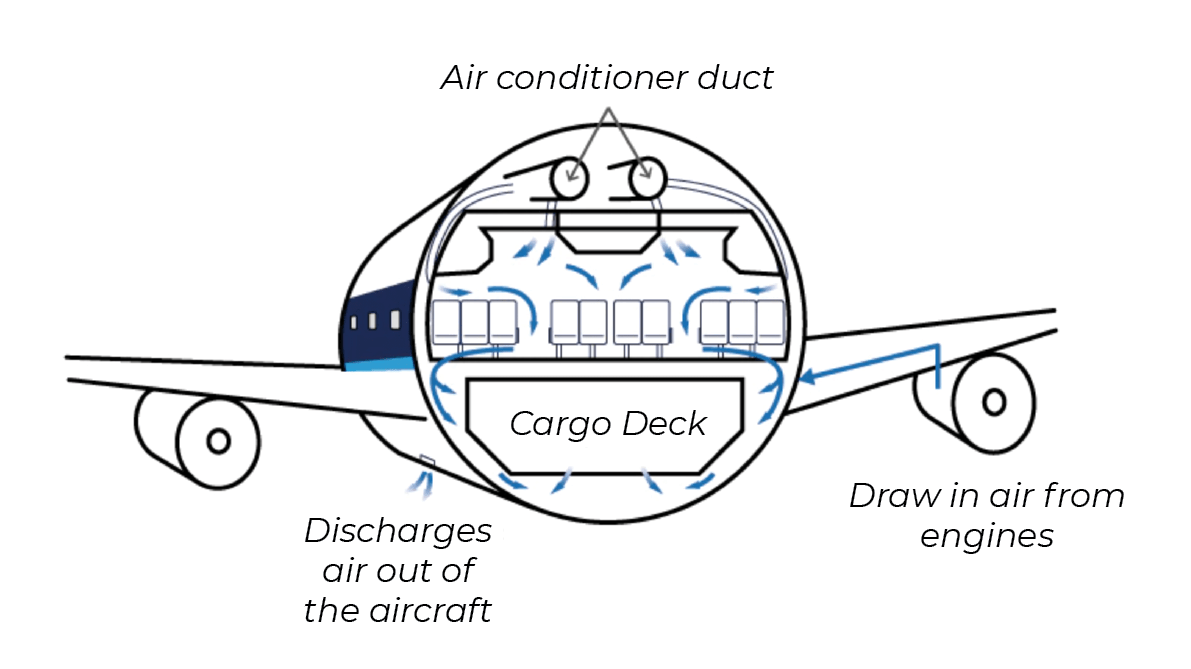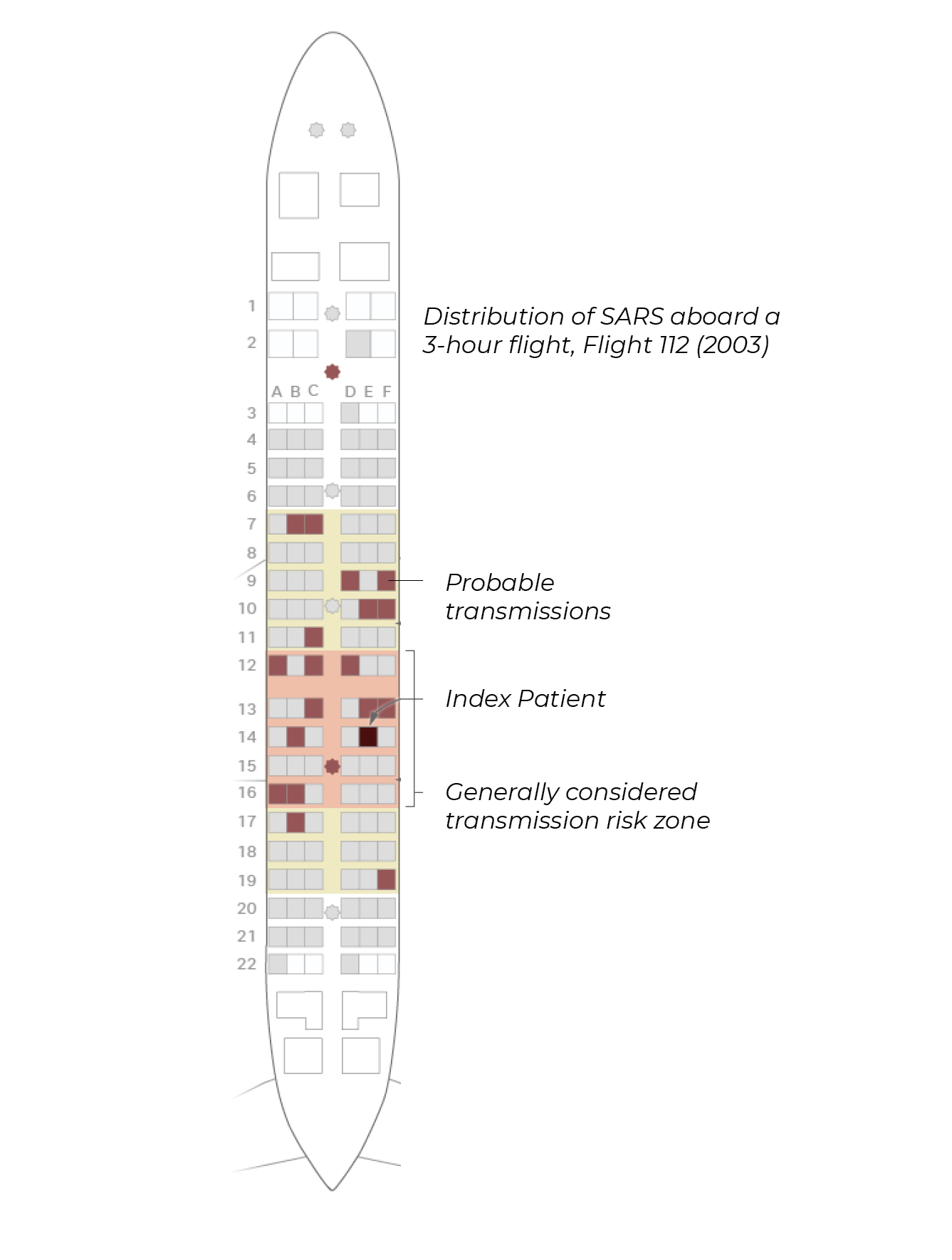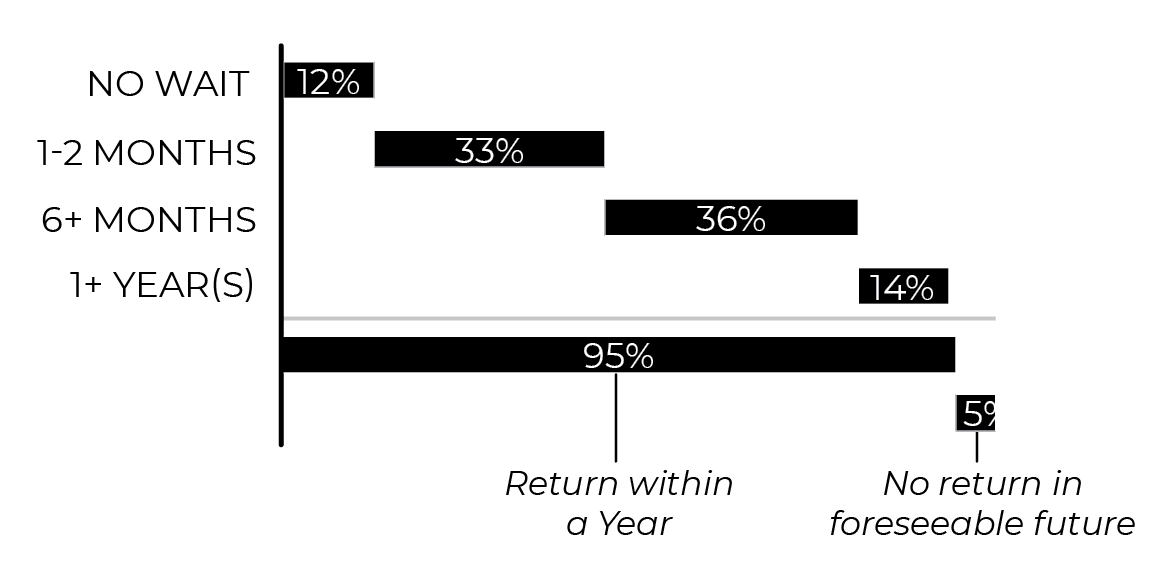Germs

The COVID-19 pandemic’s rapid international spread is attributed primarily to air travel.
︎︎︎ Related entries:
Jetiquette
Rituals
Illusion of Control
︎ Random Entry
Tags: systems design, materials,
sensory (visual, tactile, smell)
Jetiquette
Rituals
Illusion of Control
︎ Random Entry
Tags: systems design, materials,
sensory (visual, tactile, smell)
Air travel can have a number of physiological effects on the body, from jet lag and aches to swelling extremities. Environmental factors such as low humidity in the cabin air lead to dehydration, creating nasal or throat discomfort. The fear of being infected by an illness on airplanes has always been present, exacerbated by these bodily discomforts. But today, passengers directly confront the dangers of germs as never before, as the world navigates the current COVID-19 pandemic.
In 2007, an article in the The Journal of Infectious Diseases warned that, “Air travel can influence the global spread of emerging and established infectious disease. Infections may be spread on the aircraft through close contact and large droplets… Perhaps the greatest concern for global health, however, is the ability of a person with a contagious illness to travel to virtually any part of the world within 24 hours” [1].
Today, the world reckons with a pandemic whose international spread is attributed primarily to air travel. As a result of travel bans, governmental lockdowns, and passenger fear of air travel, airplanes have been emptied out of passengers, causing financial damage far beyond the impact of previous epidemics such as SARS and MERS [2].
![]()
Depth of COVID-19 impact on the air travel industry far exceeds previous crises [2].
In order to reduce further spread of COVID-19 over air travel, airlines and airports have bolstered the routine cleaning procedures of aircrafts and terminals. Airports have also instituted screening measures including thermal cameras and social distancing, but studies have raised doubts about these methods, arguing that “airport screening is largely futile” [4]. Airplane cleaning seems to have a greater effect at limiting transmission. These cleaning procedures can be summarized as a three-pronged effort:
Sanitation of Physical Touchpoints
Airlines clean cabins to varying degrees between each flight, with international flights receiving more rigorous cleaning than domestic flights due to the longer time allotted for turnaround [4]. Since March 2020, airlines have greatly enhanced their cleaning policy, and health agencies such as the World Health Organization (WHO) and the Centers for Disease Control (CDC) have published updated guidelines for cleaning an aircraft cabin during the COVID outbreak [5].
Before COVID, standard procedure between flights involved removing trash, switching linens, and wiping surfaces with an EPA-approved disinfectant. When the aircraft is done flying at the end of the day, crews would use this time to give the plane a deeper clean. Since COVID, cleaning protocols now include a closer attention to physical touchpoints, specifically seats, overhead air vents, door handles, tray tables, seatback pockets, and window shades. Most airlines have also started spraying a high-grade disinfectant inside the cabin after every international flight, called “fogging” [4]. When fogging the interiors of planes with disinfectant, tray tables are lowered and overhead bins and lavatory doors are opened [6, 7]. Some airlines, such as JetBlue, are also providing passengers with sanitizing wipes in-flight [8].
In 2007, an article in the The Journal of Infectious Diseases warned that, “Air travel can influence the global spread of emerging and established infectious disease. Infections may be spread on the aircraft through close contact and large droplets… Perhaps the greatest concern for global health, however, is the ability of a person with a contagious illness to travel to virtually any part of the world within 24 hours” [1].
Today, the world reckons with a pandemic whose international spread is attributed primarily to air travel. As a result of travel bans, governmental lockdowns, and passenger fear of air travel, airplanes have been emptied out of passengers, causing financial damage far beyond the impact of previous epidemics such as SARS and MERS [2].

Depth of COVID-19 impact on the air travel industry far exceeds previous crises [2].
In order to reduce further spread of COVID-19 over air travel, airlines and airports have bolstered the routine cleaning procedures of aircrafts and terminals. Airports have also instituted screening measures including thermal cameras and social distancing, but studies have raised doubts about these methods, arguing that “airport screening is largely futile” [4]. Airplane cleaning seems to have a greater effect at limiting transmission. These cleaning procedures can be summarized as a three-pronged effort:
- Sanitation of Physical Touchpoints
- Air Circulation and Filtration
- Social Distancing and PPE
Sanitation of Physical Touchpoints
Airlines clean cabins to varying degrees between each flight, with international flights receiving more rigorous cleaning than domestic flights due to the longer time allotted for turnaround [4]. Since March 2020, airlines have greatly enhanced their cleaning policy, and health agencies such as the World Health Organization (WHO) and the Centers for Disease Control (CDC) have published updated guidelines for cleaning an aircraft cabin during the COVID outbreak [5].
Before COVID, standard procedure between flights involved removing trash, switching linens, and wiping surfaces with an EPA-approved disinfectant. When the aircraft is done flying at the end of the day, crews would use this time to give the plane a deeper clean. Since COVID, cleaning protocols now include a closer attention to physical touchpoints, specifically seats, overhead air vents, door handles, tray tables, seatback pockets, and window shades. Most airlines have also started spraying a high-grade disinfectant inside the cabin after every international flight, called “fogging” [4]. When fogging the interiors of planes with disinfectant, tray tables are lowered and overhead bins and lavatory doors are opened [6, 7]. Some airlines, such as JetBlue, are also providing passengers with sanitizing wipes in-flight [8].
Air Circulation and Filtration
Air on planes is typically filtered through high-efficiency particulate air filters, also called HEPA filters. The air circulates until it is drawn into the lower fuselage, run through HEPA filters, and then re-mixed with a constant supply of fresh air. These filters capture between 94 to 99.7 percent of airborne microbes, and all of the air in the cabin is refreshed every 15 to 30 times per hour, a rate far more frequent than those in buildings [9]. These air circulation protocols using HEPA filters have already been in use for years throughout the majority of aircrafts, but now airlines are paying additional attention to their air filtering systems during COVID-19.
The overhead air vents for individual passengers, called “graspers”, can also play a role in limiting the community spread of COVID-19. If a passenger is infectious, turning on the overhead air vent can help contain his or her airborne microbes. According to Vicki Hertzberg, a biostatistician who co-led a study on disease transmission with Boeing, the strong force of air attracts other air into it: “You’re sneezing into that draft of air and it just immediately sucks it down to the floor" [10, 11].

PPE and Social Distancing
Most flight attendants are now required to wear masks and gloves, especially for those on international routes [6]. Masks are required for passengers currently, but this rule is not yet uniformly enforced and different countries have different cultural norms about mask usage.
Significant risks remain for both passengers and flight crew. All the rigorous cleaning protocols do little to help a passenger avoid an infection, if an infected person is within one’s transmission zone. The WHO and the CDC’s guidelines of social distancing states that people should keep a distance of about six feet from each other, but this can be difficult in airplanes where people are packed together in close proximity for long periods of time. Many airlines currently space out the passengers so that at least every other seat remains empty, in an effort to abide by the social distancing guidelines.

“Fogging” of high-grade disinfectant in aircraft.

Social distance seating onboard allows 2/3rds of maximum capacity.
The size of the potential transmission zone is also hard to predict. Although it is generally believed that respiratory infection spreads in planes approximately two rows ahead of and behind the infected patient, actual transmission may go much further. In the case of SARS, a coronavirus outbreak from 2002-2003 with similar means of transmission as COVID-19, a single patient infected 18 passengers as far as seven seats away, much further than the zone considered a risk for transmission [12, 13]. In the case of the flu, studies of flu transmission in-flight have revealed that the safest place to sit on a plane is by a window [14]. “Statistically, people in window seats come into contact with fewer passengers because they leave their seats less often than those sitting near the aisle. And they are a few more feet from the action in the aisle, where passersby could be coughing, sneezing and spreading germs” [10]. It remains to be seen what exactly might be the transmission zone of COVID-19 in-flight.

Crowding is an issue at many different points of the air travel experience. "When boarding a plane, people are blocked and forced to stand near the person putting luggage in the bin -- people are very close to each other. This problem is exacerbated when many [boarding] zones are used" [12].
What if
What if the industry took COVID-19 pandemic as an opportunity to rethink and address issues that were already present in the air travel experience?
COVID-19 has exposed further inadequacies and inefficiencies in the air travel industry. In particular, the economic feasibility of air travel is dependent upon spatial efficiency, which is in direct conflict with the physical distancing required by COVID-19. How might the pandemic help us rethink some of the issues that were already present in the air travel experience?

IATA Survey Question (conducted June, 2020):
Once the pandemic has subsided, how long would you wait, if at all, to return to your usual travel plans?
- Pavia, Andrew T. “Germs on a Plane: Aircraft, International Travel, and the Global Spread of Disease.” The Journal of Infectious Diseases 195, no. 5 (March 1, 2007): 621–22.
-
Pearce, Brian. “COVID-19: Flexibility Will Be Critical to Success in First Year of Restart.” IATA, June 16, 2020.
-
Normile, Dennis. “Airport Screening Is Largely Futile, Research Shows.” Science (New York, N.Y.) 367, no. 6483 (13 2020): 1177–78.
-
Cheslaw, Louis. “Delta’s New Long-Haul Service Is a Game Changer for Economy Class Fliers” Condé Nast Traveler, Nov 15, 2019.
-
“Updated Interim Guidance for Airlines and Airline Crew: Coronavirus Disease 2019 (COVID-19).” Centers for Disease Control and Prevention, June 8, 2020.
-
Martin, Hugo. “Wondering How Planes and Ships Are Being Disinfected to Fight Coronavirus? Here's How.” Los Angeles Times, March 3, 2020.
-
Weed, Julie. “Coronavirus and Plane Travel: What to Expect If You're Flying.” The New York Times. The New York Times, March 11, 2020.
-
Puckett, Jessica. n.d. “How Airlines Are Sanitizing Planes Amid Coronavirus.” Condé Nast Traveler.
-
“Briefing Paper: Cabin Air Quality – Risk of Communicable Diseases Transmission.” IATA, January 2018.
-
Huang, Pien., Michaeleen Doucleff. “How Not To Get Sick On A Plane: A Guide To Avoiding Pathogens.” n.d. NPR.Org.
-
Hertzberg, Vicki, Howard Weiss, Lisa Elon, Wenpei Si, Sharon Norris, and FlyHealthy Research Team. “Behaviors, Movements, and Transmission of Droplet-Mediated Respiratory Diseases during Transcontinental Airline Flights.” Proceedings of the National Academy of Sciences, no. 115 (14) (April 3, 2018): 3623–27.
-
“How at Risk Are You of Getting a Virus on an Airplane? New ‘CALM’ Model on Passenger Movement Developed Using Frontera Supercomputer.” n.d. ScienceDaily.
-
Olsen, Sonja J., Hsiao-Ling Chang, Terence Yung-Yan Cheung, Antony Fai-Yu Tang, Tamara L. Fisk, Steven Peng-Lim Ooi, Hung-Wei Kuo, et al. “Transmission of the Severe Acute Respiratory Syndrome on Aircraft.” New England Journal of Medicine 349, no. 25 (December 18, 2003): 2416–22.
- Mzezewa, Tariro. “How to Disinfect Your Space on an Airplane.” New York Times, n.d.